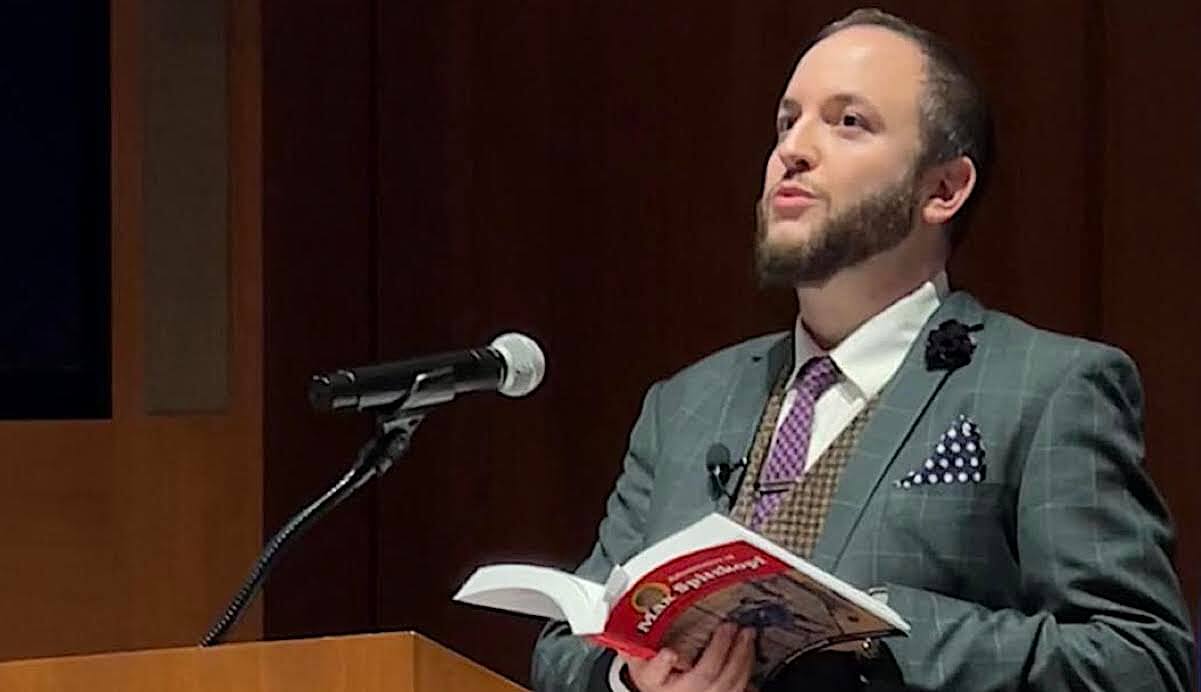A Relentless Rebellion Against Unfairness

Graphic by Angelie Zaslavsky

A Wise Man: Frederick Wiseman, for once in front of, rather than behind, the camera. Image by JOHN EWING
For those who believe in a documentary film that is pitiless, sometimes harrowing, but always relentlessly veracious, December 17 is the last chance to catch the yearlong Museum of Modern Art tribute to Frederick Wiseman, who turned 80 last January. Related festivities have included this past June’s AFI/Discovery Channel Silverdocs Documentary Festival, in Silver Spring, Md., featuring a mini-retrospective of Wiseman’s work. Some Wiseman films screened in the MoMA retrospective — such as 1967’s “Titicut Follies” (which director Milos Forman has acknowledged influenced his “One Flew Over the Cuckoo’s Nest”), shot at a Massachusetts mental hospital for the criminally insane; 1970’s “Hospital,” about a downtrodden New York health facility, and 1989’s “Near Death,” about the intensive care unit at Boston’s Beth Israel Hospital — reveal aspects of human experience that are horrific but enlightening.
Even in the most tragic context, such as his 1978 documentary, “Sinai Field Mission,” Wiseman focuses on ironic details. In this film, diplomats and technicians run America’s Sinai Field Mission, which from 1976 to 1982 was intended to help keep the peace after the 1973 Yom Kippur War. It’s a task filled with seeming futility, such as diligently but uselessly sweeping sand from a road during a windstorm, as one worker strives to do.
Other Wiseman documentaries, like 1995’s “Ballet,” a profile of the American Ballet Theatre, and last year’s “La Danse: Le Ballet de l’Opéra de Paris,” recently shown on the Public Broadcasting Service, by contrast inhabit an ideal realm. Yet in Wiseman’s vast and varied output, all distributed by his Cambridge, Mass., company, Zipporah Films, categories tend to overlap. His new documentary, “Boxing Gym,” released in October, was aptly termed a “sweat ballet” by one recent reviewer, in reference to the dancelike fisticuffs by habitués of an Austin, Texas, gymnasium. How does Wiseman find dynamic velocity and the power of the survival instinct even in tragic, humdrum or outright depressing settings?
One explanation may be found in the splendid new catalog Frederick Wiseman, just out from MoMA Publications that illuminates the Jewish component of Wiseman’s creativity.
In an autobiographical note, Wiseman explains that his Russian-born father was a Boston lawyer who, during World War II, strove to assist “Jews escaping to America from anti-Semitism and war.” Recalling his childhood, Wiseman notes, “Anti-Semitism was everywhere, or so it felt to me who remembers listening to Hitler’s speeches on the radio and the rants of Father Coughlin, a Roman Catholic priest who regularly raged against Jews on a Sunday morning radio program broadcast nationwide.”
In 1930s Boston, it was “almost impossible” for Jews to be hired by either prestigious law firms or local hospitals, Wiseman concludes, adding: “Most [Boston] Jews lived in their ghetto.” This early sense of exclusion from institutions must have played a role in Wiseman’s lifelong fascination with the very concept of an institution, whether a hospital, prison, army basic training, the Neiman Marcus department store, a zoo, a meatpacking plant or indeed a ballet company. This youthful experience was accentuated by his studies at Williams College. Wiseman recalls that many American schools circa 1947 were “examples of institutionalized anti-Semitism. The social life was built around fraternities. Jews were not admitted, except those few who successfully concealed their religious origins.”
The teenage Wiseman was unable to “make sense of the unhappiness” that this discrimination caused him, and his “innocence rebelled at the unfairness,” so he sought refuge in books, becoming an avid reader. These formative experiences would inspire a series of 36 films on institutions, yet without the supposed objectivity of the so-called “fly on the wall” school of documentary filmmaking. Christopher Ricks, in one of the more amusing essays in the MoMA catalog, points to a Wiseman film, 1972’s “Essene,” shot in a Benedictine monastery. In this film, a priest absentmindedly swats at a fly, thereby contradicting the “commonplace sappy phrase about ‘a fly on the wall,’” given that the monastery’s fly was visibly “not granted even the untrustworthy safety of a wall,” as Ricks notes.
Wiseman himself maintains a cool approach that displays opinion through camera angles and shots, but not through speaking or intervention. By so doing, Wiseman’s camera gets closer to some permanently unpalatable realities, but is by no means stoically indifferent to them. Today’s TV audience relishes fictional postmortems on such series as “CSI” and “Bones,” but this same public is probably still not ready for the autopsy work as recorded in Wiseman’s “Hospital.” Wiseman’s memento mori in the guise of anatomical dissection contains a seed of utter hysteria underlying the technical actions. Moments in Wiseman’s documentaries that involve sickness, death or postmortem dissection can resemble horror films, but because the horror being represented is related to human mortality, his documentaries stand as uniquely truth-bearing works.
Commiseration with the excluded is another constant theme of Wiseman’s oeuvre. “Public Housing” (1997) subtly demonstrates the glaring indignities that impoverished people must endure, even during such a banal act as grocery shopping. Yet in “Public Housing,” “Domestic Violence” (in two parts, 2001 and 2002) and other films, Wiseman surprises us with affirmative verve that is rooted in theatricality, entertaining us as we are edified about the lives of others. Theater has been an essential background to Wiseman’s work, ever since he traveled, after law school and army service, to France in the late 1950s to see performances by such great actors as Robert Hirsch.
Wiseman’s theatrical imagination is also marked by his Jewish heritage. In 1988, Wiseman adapted a chapter from the Russian-Jewish author Vasily Grossman’s “Life and Fate,” still in print from New York Review Books Classics. The work is a narrative about a Jewish family at the time of the Battle of Stalingrad. In Wiseman’s adaptation, “The Last Letter,” a Russian-Jewish doctor writes to her son shortly before she is murdered by Nazis who have occupied her Ukrainian village. Wiseman directed the play in France (as “La Dernière Lettre” at the Comédie-Française in 2000, a production that he filmed two years later) and in English in 2003 at New York’s Theatre for a New Audience. From 2005 to 2006, Wiseman returned to the Comédie-Française to direct Beckett’s “Happy Days,” and even filled in for the actor playing the role of Willie for a few performances in 2006.
This brief, yet significant, role-playing as Willie, a character who lives in a cave behind a mound in which his increasingly buried wife merrily chatters on, conveys an essential message about the improbable, sometimes bitter, comedy of survival. A never-satisfied work addict, Wiseman shared with one 2007 interviewer ideas about how “Titicut Follies” might be re-edited, some 40 years after that film’s release. Critic David Denby has described Wiseman as a “Jewish leprechaun,” but he is really closer to a Jewish Beckett, fully aware of reasons for despairing, but innately incapable of surrender, with Beckett’s eternal motto of “I can’t go on, I’ll go on” seemingly emblazoned in the credits of each of Wiseman’s lastingly compelling, courageously moving films.
Benjamin Ivry is a frequent contributor to the Forward.
Watch Frederick Wiseman explain his method as documentarian below:
Watch the balletic trailer for Wiseman’s 2010 documentary “Boxing Gym” below:

















